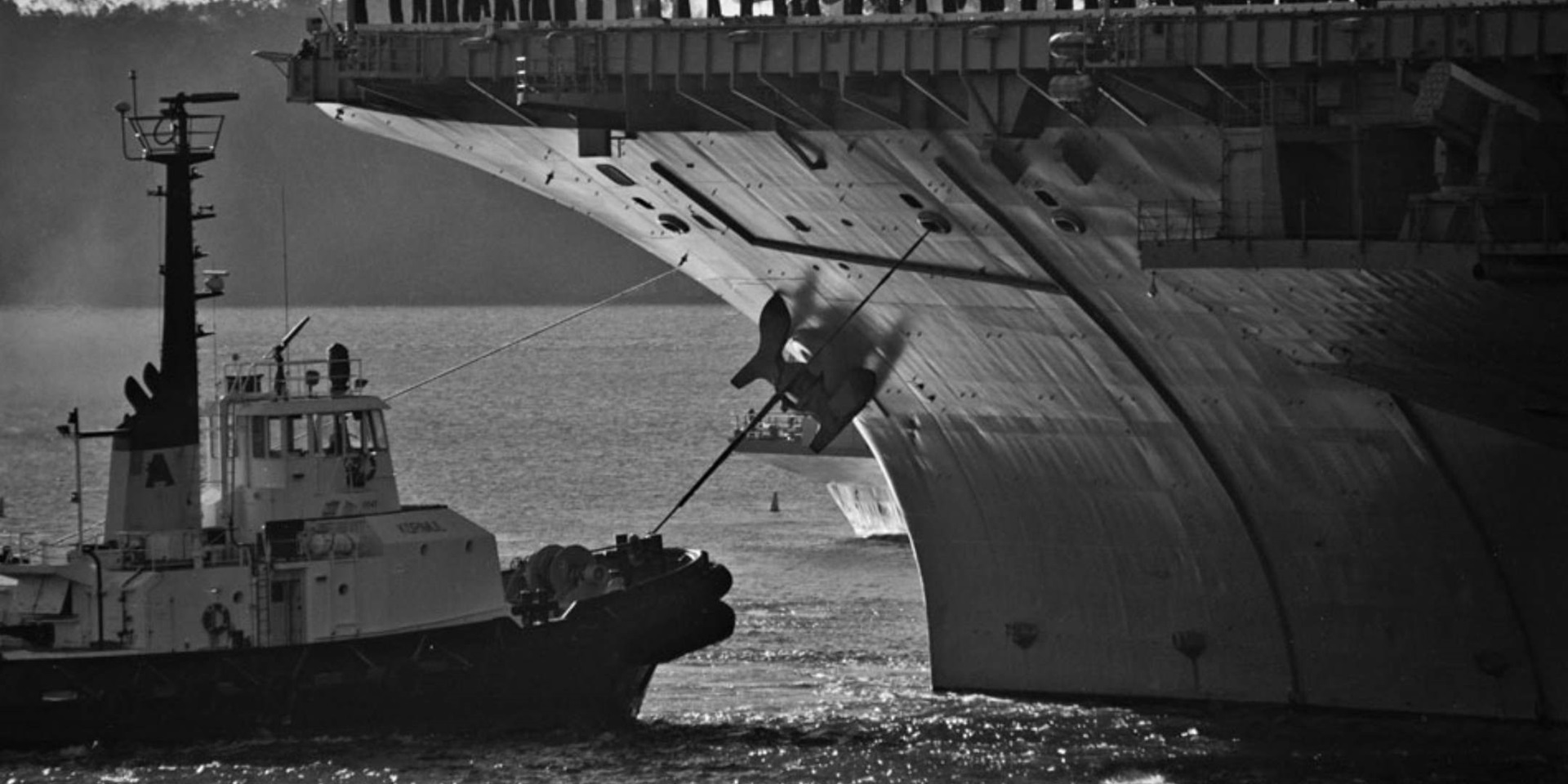
Sydney’s working harbour
by Ross Bray, Photographer
Tug boat on Sydney Harbour, 2005-2008. Photograph by Ross Bray
From the arrival of the Europeans in 1788 until recently, Sydney Harbour was primarily a place of industry – of wharves, cranes, warehouses and working boats. By the late 19th century, the tug boat was a ubiquitous part of harbour life.
Big ships steamed in and out of the harbour bringing goods from around the world to disgorge their contents on the docks of Sydney. Australian produce steamed out. Sydney Harbour was import and export central – the economic lifeline to a globalising, increasingly connected world. It was always a visual reminder that there was a big wide world out there somewhere over the horizon.
Pushing and pulling those ships in and out of their berths were the tug boats. Powerful little boats with big hearts and heaps of attitude. They were much loved the workhorses of the harbour.
This pulsating picture of maritime industry on Sydney Harbour carried on its daily routines until 2005, when it was decided that heavy industry would be shifted from Sydney and the wharves and foreshores would be used for other purposes. Like harbours and ports around the world, the real estate value of what Governor Phillip back in 1788 thought of as ‘the finest harbour in the world’ was too great to waste on maritime industries.
When it was announced that most of the big ships – and with them the tug boats – were going to leave Sydney Harbour, a poll found that 78 per cent of Sydney residents opposed the move and Australia wide that figure was an incredible 98 per cent.
But still, it happened. So, as a photographer, I thought I could be useful in capturing some of this history before it changed forever. I decided I would attempt to record, through photographs, some of the work of the tug boats in particular. After all it was the end of an era.
Tug boat moving an aircraft carrier on Sydney Harbour, 2005-2008. Photograph by Ross Bray
In the comings and goings of big ships it was the tugs pushing them around that most people loved to watch. So did I. So I proposed a photo journalistic project to a tug boat company, who had no problems with the idea.
The tug boat skippers and crews however took a little more persuading. After all, they had many times seen photographers line up a tug boat with the Harbour Bridge or the Opera House in the background, take a few shots, go home and that was it.
A selection of photographs by Ross Bray taken between 2005 and 2008.
But I wanted a bit more, and it wasn’t until I had shot a few rolls of film and shown the tug boat crews the results that things changed rapidly. The crews couldn’t be more helpful once they understood that it was all about the work they did and how they did it.
Photograph of a tug boat on Sydney Harbour, 2005-2008
Photograph by Ross Bray
Discussion flowed over their radios from tug to tug; ‘Where do you want us? How close in?’ They shepherded me out of the way when the work was tight or dangerous, which it often was. They dropped me off or picked me up from ferry wharves as needed, much to the surprise of people waiting for ferries as a huge tug pulled in and then pulled away leaving a foaming trail.
Once I asked for a close shot of another tug boat tight in against the side of a ship travelling down the harbour. The skipper promptly tucked us in so close under the ships bow that the ship sounded its horn as a warning while the crew leaned over the bow to make sure we weren’t run down. But the skipper kept pace with the ship and just ahead of its bow. Tug boat skippers know their stuff.
Tug boats work in all weather, at all times. They move the big RoRo’s (Roll On Roll Off) cargo ships, they welcome the big passenger liners, they move historic ships to their moorings and grab some of the most powerful warships in the world by the scruff of the neck and push them into place.
When I started photographing the tug boats, people would often stop me and ask what I was doing. When I explained the project, they said how much they loved the working harbour, these little working boats.
I think the loss of Sydney as working harbour and the loss of the wonderful tug boats make this beautiful city and its stunning harbour just that little more insular and certainly a little blander.
About the author
Ross Bray is an Australian photographer from Sydney, now resident of Myocum in Northern New South Wales. He worked for 30 years as a photojournalist and TV reporter/producer. Ross prefers to work in the classic format of film photography, rather than digital.
